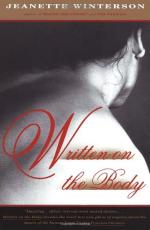|
This section contains 4,798 words (approx. 16 pages at 300 words per page) |

|
SOURCE: Fahy, Thomas. “Fractured Bodies: Privileging the Incomplete in Jeanette Winterson's The Passion.” Mosaic 33, no. 3 (September 2000): 95–106.
In the following essay, Fahy examines Winterson's use of fragmented bodies in The Passion to represent the restorative powers of postmodern art.
Many lesbian writers, such as Monique Wittig and Jeanette Winterson, have used images of fragmented female bodies to subvert heterosexist norms and question the politics of gender roles. For these and other authors, shattered or incomplete bodies call into question culturally constructed assumptions about women's bodies as knowable sites—sites which can be possessed and controlled. This fragmentation also destabilizes some of the boundaries placed on bodies to promote possibilities for social and sexual difference. As Judith Butler has argued in Bodies That Matter, objects have a discrete set of boundaries, but bodies do not; instead, it is the act of labeling bodies and sexuality according to heterosexual standards (“woman...
|
This section contains 4,798 words (approx. 16 pages at 300 words per page) |

|


